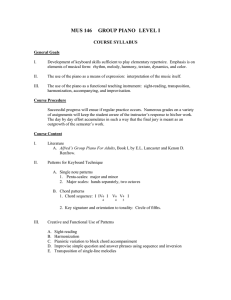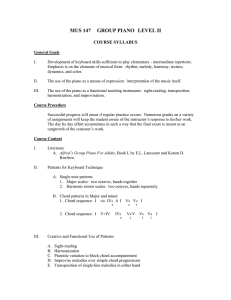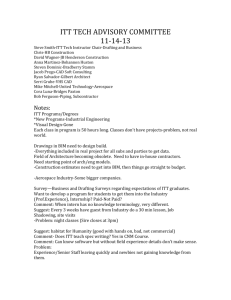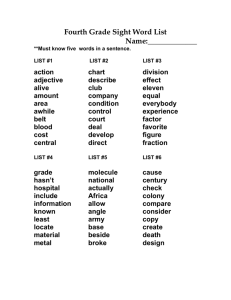MUS 246 GROUP PIANO LEVEL III COURSE SYLLABUS
advertisement
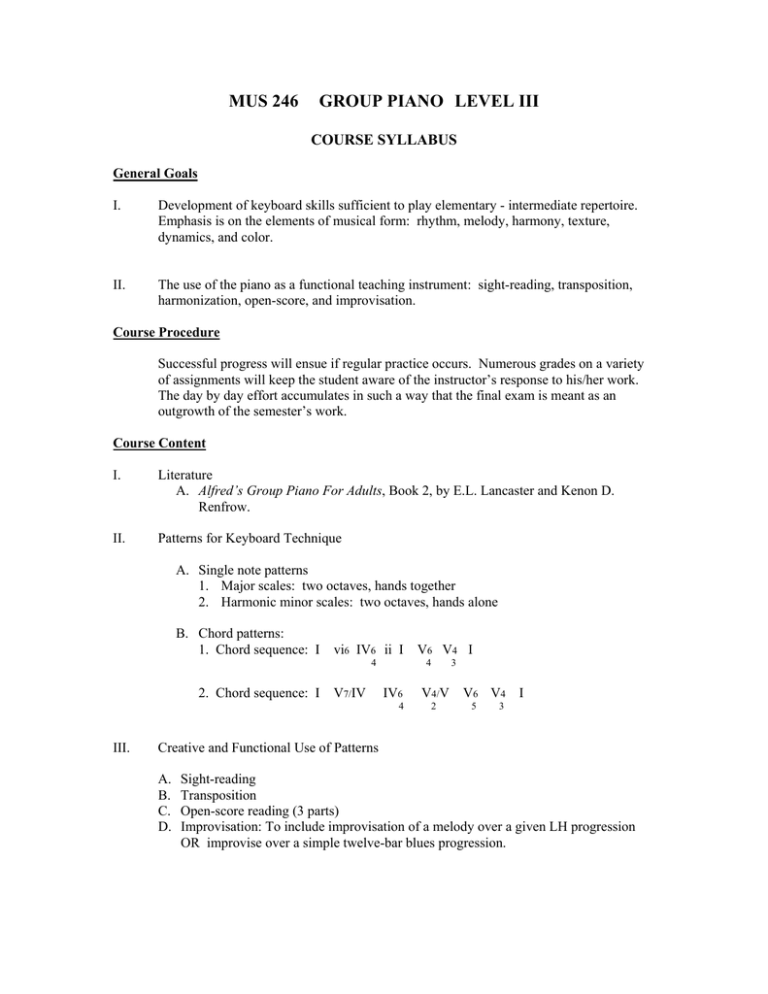
MUS 246 GROUP PIANO LEVEL III COURSE SYLLABUS General Goals I. Development of keyboard skills sufficient to play elementary - intermediate repertoire. Emphasis is on the elements of musical form: rhythm, melody, harmony, texture, dynamics, and color. II. The use of the piano as a functional teaching instrument: sight-reading, transposition, harmonization, open-score, and improvisation. Course Procedure Successful progress will ensue if regular practice occurs. Numerous grades on a variety of assignments will keep the student aware of the instructor’s response to his/her work. The day by day effort accumulates in such a way that the final exam is meant as an outgrowth of the semester’s work. Course Content I. Literature A. Alfred’s Group Piano For Adults, Book 2, by E.L. Lancaster and Kenon D. Renfrow. II. Patterns for Keyboard Technique A. Single note patterns 1. Major scales: two octaves, hands together 2. Harmonic minor scales: two octaves, hands alone B. Chord patterns: 1. Chord sequence: I vi6 IV6 ii I 4 2. Chord sequence: I V7/IV 4 IV6 4 III. V6 V4 I V4/V 2 3 V6 V4 I 5 3 Creative and Functional Use of Patterns A. B. C. D. Sight-reading Transposition Open-score reading (3 parts) Improvisation: To include improvisation of a melody over a given LH progression OR improvise over a simple twelve-bar blues progression. Proficiency Requirements (combination of the midterm and final exams) I. Literature A. Three pieces from various stylistic periods taken from the text (all to be divided among the midterm exam and final exam). One of these pieces must be memorized. II. Technique A. Major scales: hands together, two octaves. B. Harmonic Minor Scales: Hands alone, two octaves. III. Melodies and Harmonizations; Transposition A. Four harmonizations will be prepared during the semester (two during midterm exam; two during final exam). These should exhibit a variety of accompaniment patterns and will be in a variety of keys. In addition, at least one should be memorized, one should be transposed to at least six (or more) different keys, and one of the tunes may be treated in variation fashion. It is up to the instructor to define exactly the terms in this area. IV. Sight-Reading A. Given a melody, harmonize it with appropriate chords in block position. This harmonization will include the chords I vi6 IV6 ii I V6 V4 I 4 4 3 AND V7/IV IV6 4 V4/V 2 V6 V4 I 5 3 B. Play a three-part open-score at sight.
